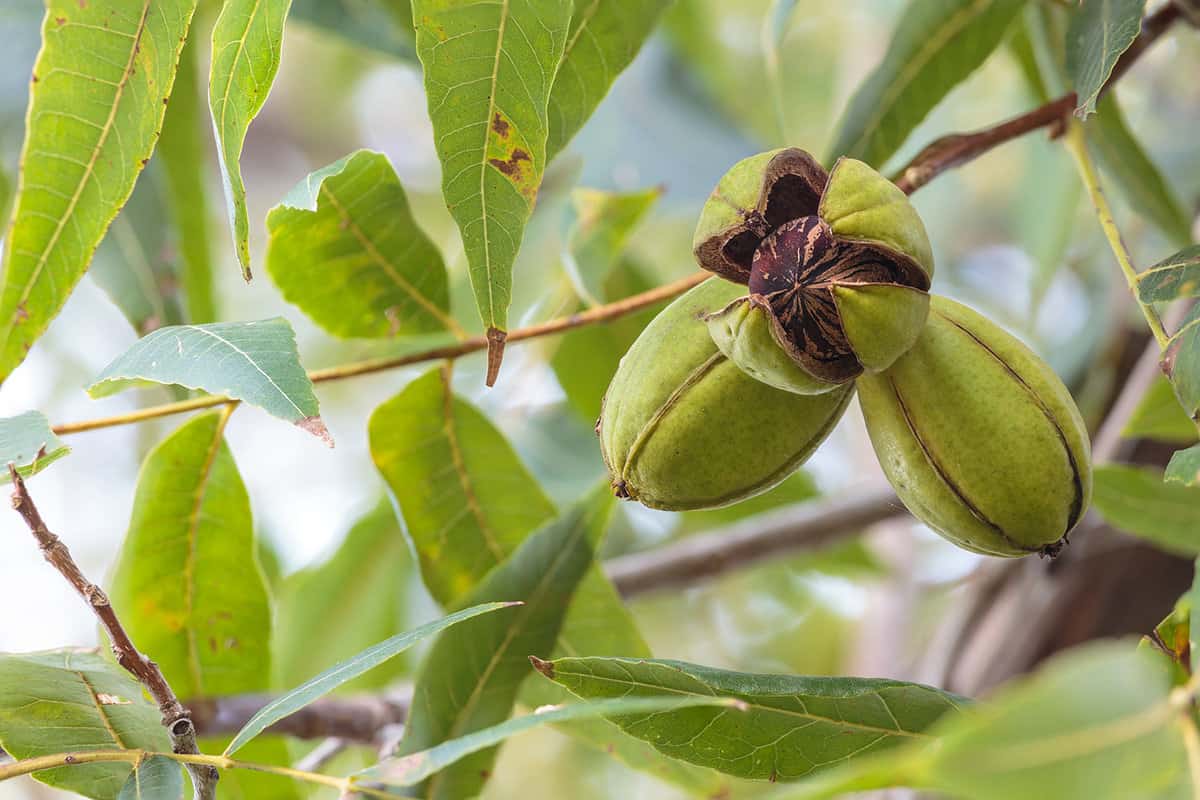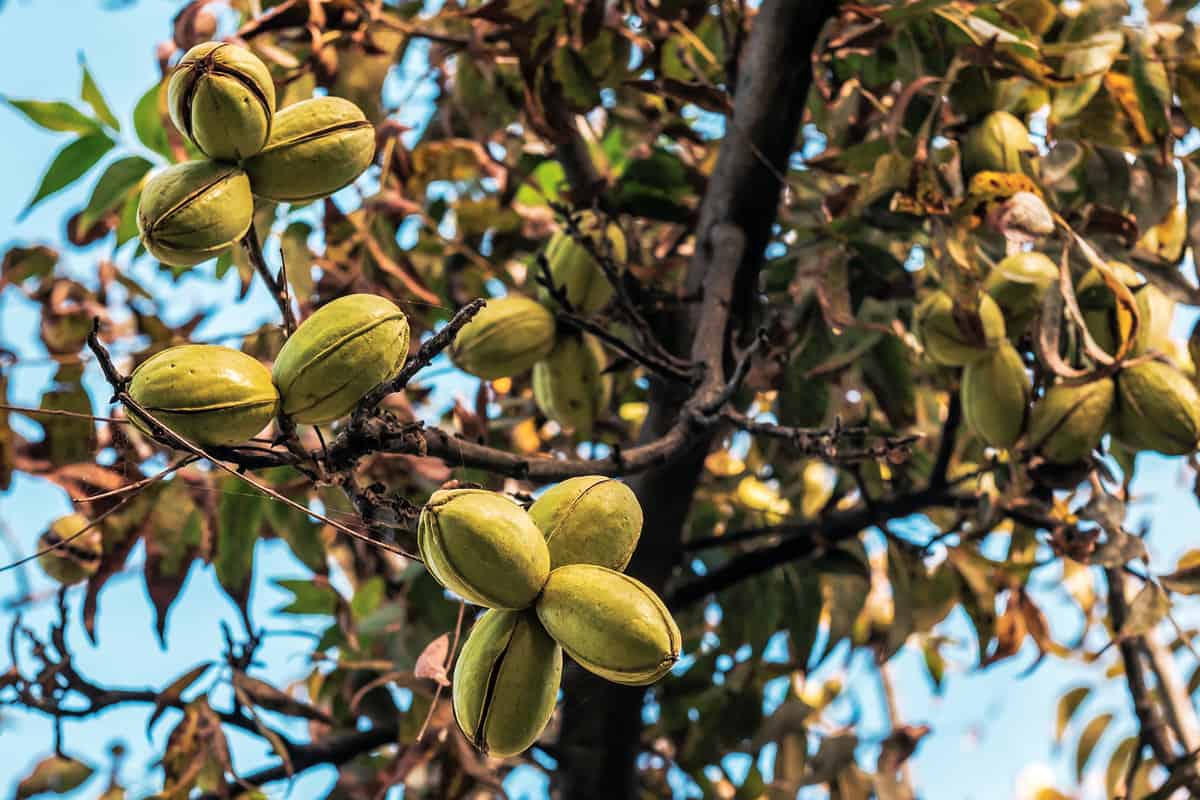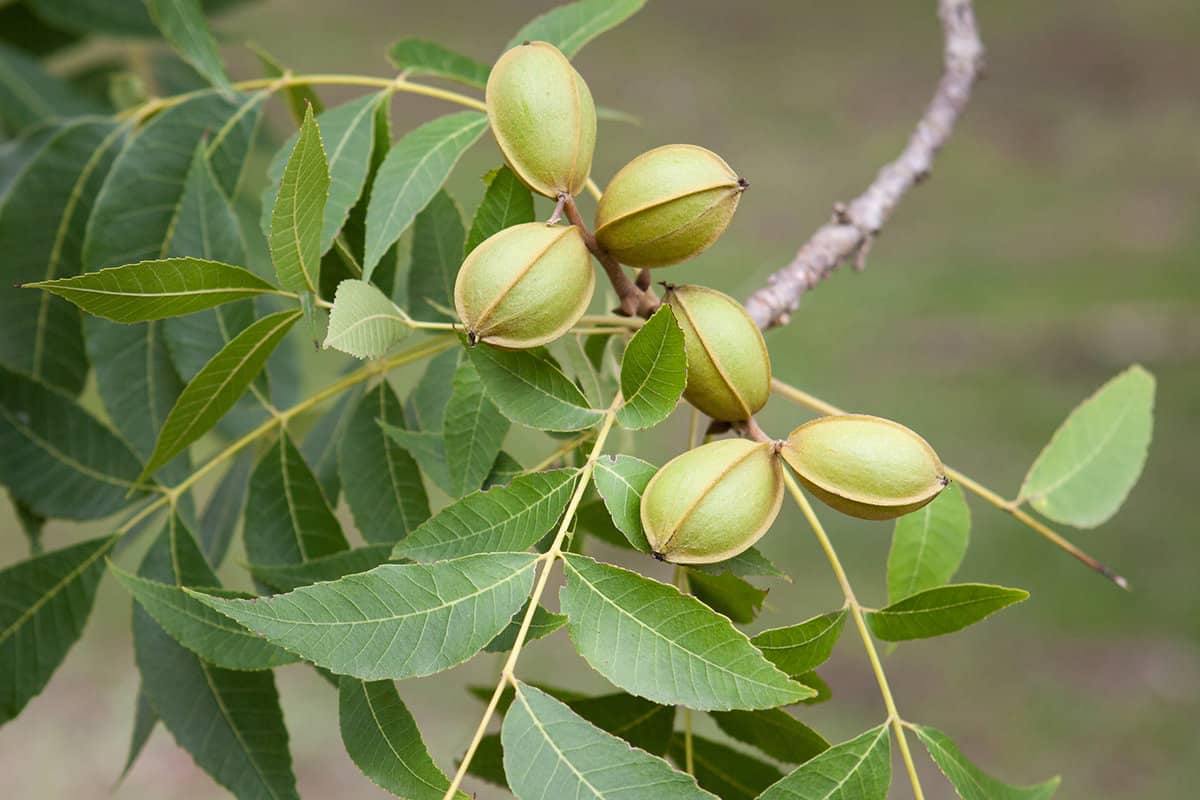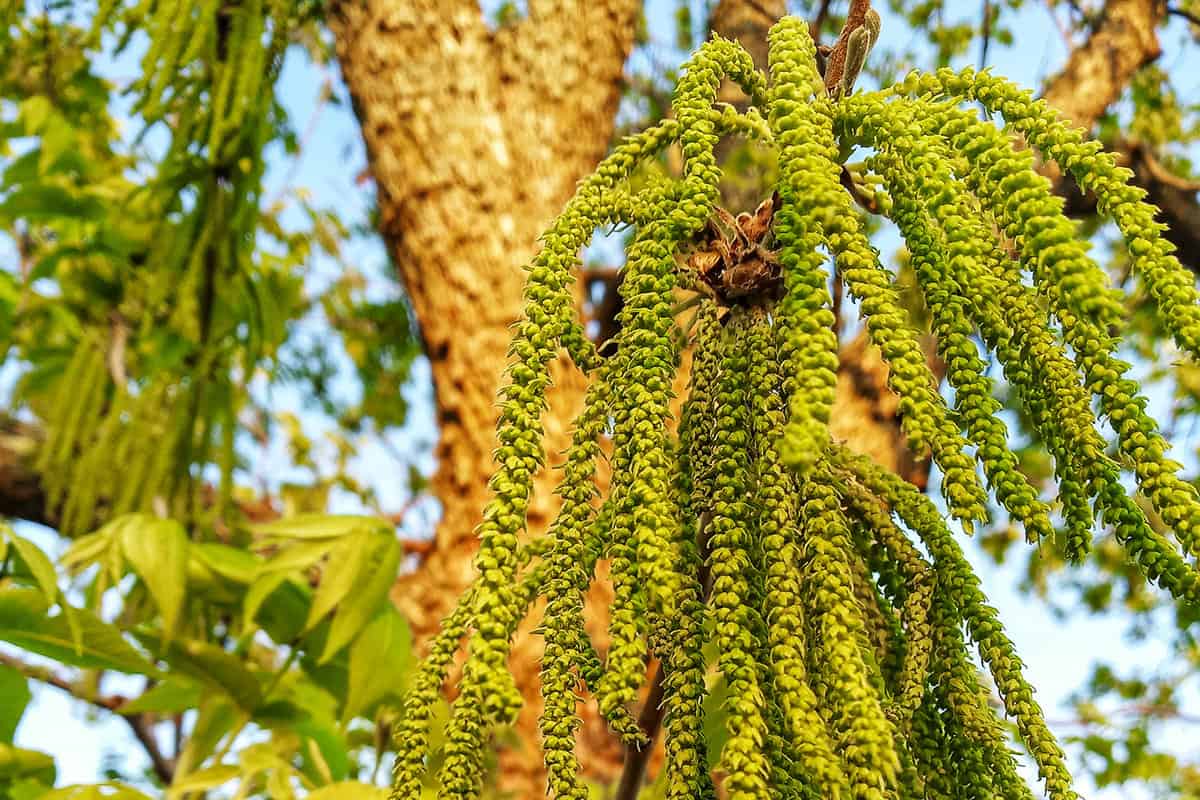Pecan trees have a long and vibrant history throughout the United States. If you’re thinking about cultivating a personal pecan tree or kickstarting an entire orchard, you need to know the best way to ensure a pecan nut harvest. But are pecan trees self-pollinating, or do you have to help the trees along? We've researched these questions and have answers to share.
Some pecan trees can self-pollinate. Self-pollination doesn’t always result in a successful nut harvest, though, nor are all pecan trees capable of it.
If you’re not sure whether your pecan trees will self-pollinate in the coming season, you can work with local landscapers to determine what type of pollination your trees engage in. Read on to learn more about these landscaping habits as well as the other strategies that you can employ to ensure the health of your trees.
Are Pecan Trees Self-Pollinating?

Some pecan trees are self-pollinating, and some aren’t. Whether or not a pecan tree self-pollinates depends on the tree’s pollinating habits.
These days, some types of pecan trees are more widely planted than others, even though there are still new variations on the pecan tree being cultivated through artificial means.
The most common pecan trees available for purchase today include:
- Candy pecans
- Elliot pecans
- Kanza pecans
- Moreland pecans
- Osage pecans
- Pawnee pecans
- Stuart pecans
- Sumner pecans
You can work with a representative at your local nursery to determine what kind of pecan tree may grow best in your growing zone and what support you’ll need to give the tree. You can also learn about the tree's pollinating habits and how best to support those habits.
What Are The Different Types of Pecan Tree Flower Pollinating Habits?
It’s strange to think of trees as gendered, but they are. Most trees come in female or male variations, with successful caretakers planting some of each to ensure cross-pollination. Pecan trees, however, differ from many of their arboreal cousins. Pecan trees have both male and female flowers on a single tree.
The female flowers on a pecan tree are referred to as nutlets, whereas the male features are referred to as catkins. The nutlets tend to develop first and on a different part of the tree than the catkins.
It is somewhat rare for these features to mature at the same time, thus making it difficult but not impossible for the pecan tree to self-pollinate.
If the pecan tree’s catkins release their pollen before the tree can receive it, the tree is said to have a Type I flowering habit, or to be protandrous. Comparatively, if the nutlets become pollen-receptive before the catkins release their pollen, the pecan tree has a Type II flowering habit, or is protogynous.
Here’s where the terminology becomes even more complicated. If a pecan tree is protandrous, it’s also considered to have an incomplete dichogamy. This means that it can self-pollinate.
However, if a tree is protogynous, it’s said to have a complete dichogamy and requires cross-pollination to produce pecans.
Learn more about pollination in our article, “What’s the Difference Between Pollination and Fertilization?”
How Can You Encourage Pecan Tree Pollination?

As mentioned, there are instances in which pecan trees can self-pollinate thanks to the positioning of their reproductive features.
However, there are also steps you can take to ensure that your pecan trees end up pollinated and thus able to produce a healthy crop of pecans. The best ways to encourage healthy pecan tree pollination include:
Planting Several Pecan Trees
A lone pecan tree is more likely to self-pollinate than an orchard full of trees. While self-pollination may see your tree produce pecans, depending on the tree’s type, you can significantly increase the likelihood of a healthy pecan harvest if you plant multiple pecan trees in your yard or orchard.
Planting multiple pecan trees encourages those trees to wind pollinate or to spread pollen between one another. If you’re concerned about the quality of the pecans that wind-pollinated trees may produce, you can work with a representative at your local nursery to trace the genetic history of the trees you intend to plant in your yard.
Encouraging Pollinators to Visit Your Yard
If you want to ensure that your trees have plenty of opportunities to pollinate, you can plant flowers and other bushes that draw natural pollinators to your lawn.
You’ll ideally want to attract butterflies, bees, and even certain birds to your plants if you want these pollinators to carry pollen from pecan tree to pecan tree.
With that in mind, some of the best perennials to plant in the vicinity of your pecan trees include:
- Aster
- Wild bergamot
- Butterfly weed
- Lanceleaf coreopsis
- Goldenrod
You can work with landscapers to determine which pollinator-friendly flowers and plants will grow best in your zone. Together you can draft a landscaping plan that will draw pollinators to your orchard and help your pecan trees thrive.
What Do You Need to Know About Pecan Trees?

Pecan trees were originally named after the term “pacane,” which the Algonquin tribe used to describe the process of cracking pecan nuts with their available tools. These days, the pecan—or more specifically, the pecan pie—is a staple in the American snack diet, particularly in the South.
If you have fully-grown pecan trees on your property, you can expect your trees to bloom in the spring. These trees do best between zones 5 and 9 and tend to thrive in hot, humid environments. Some of the best pecan orchards exist in the southern United States and Mexico.
While you can propagate pecan trees from seed, most nurseries and landscapers don’t recommend doing so. Most pecan orchard managers want to be assured of the quality of the nuts coming from a new tree.
Pecan trees that are propagated instead of grafted can produce nuts of an unpredictable quality, whereas grafted trees are genetically identical to their parents.
You can learn more about tree grafting practices in our article, “Can You Graft Pecan to Oak?”
How Do You Grow Pecan Trees?

If you want to cultivate pecan trees on your property, you need to make sure that the light, soil, and humidity in your area are ideal for tree growth.
Most pecan trees grow best in full sun and in soil that drains well. If you can, test your soil to ensure that it’s neutral to slightly acidic before planting your pecan saplings.
You can expect a healthy pecan tree to grow up to 100 feet tall and 75 feet wide. Your tree can begin producing nuts within eight years of its initial planting, so long as you’re planting a sapling that’s already grown up to four feet in height.
When you first plant a pecan tree, you should provide the tree with up to 15 gallons of water per week. Be prepared to supplement for a lack of rain if necessary, particularly during the summer. You can also fertilize a growing pecan tree with a comprehensive fertilizer for the most successful long-term growth.
How Can You Keep Your Pecan Tree Healthy?

No matter how well you care for your lawn, your pecan trees are always going to be prone to diseases like:
- Pecan scab
- Brown spot
- Anthracnose
If you want to stay ahead of these diseases, not to mention aphids, you need to take active steps to preserve the health of your trees. This means investing in non-chemical pest management.
You can also plant your trees or cover their roots in well-draining soil. Doing so can prevent root rot as well as diseases resulting from overwatering.
If you find yourself contending with one of the aforementioned pecan tree diseases or a disease that you don’t otherwise recognize, call the landscapers in your area. Both landscapers and representatives at your local nursery can recommend treatment plans that can restore your trees’ health.
In Conclusion
Whether you’re cultivating a personal pecan tree or want to ensure that your orchard flourishes in the year to come, you need to know how your pecan trees pollinate. Determining whether you have to contend with Type I or Type II pollination habits can impact your plans for the coming growing season.
While some pecan trees can self-pollinate, relying on self-pollination as a strategy might not work in your favor if you want to cultivate a healthy nut harvest.
With that in mind, don’t hesitate to work with local landscapers. Experienced teams can ensure that your pecan trees get exposed to the pollinators or wind flow that they need to kick off next year’s harvest.
To learn more about how to ensure pollination throughout your yard, you can explore the posts available on our blog.
